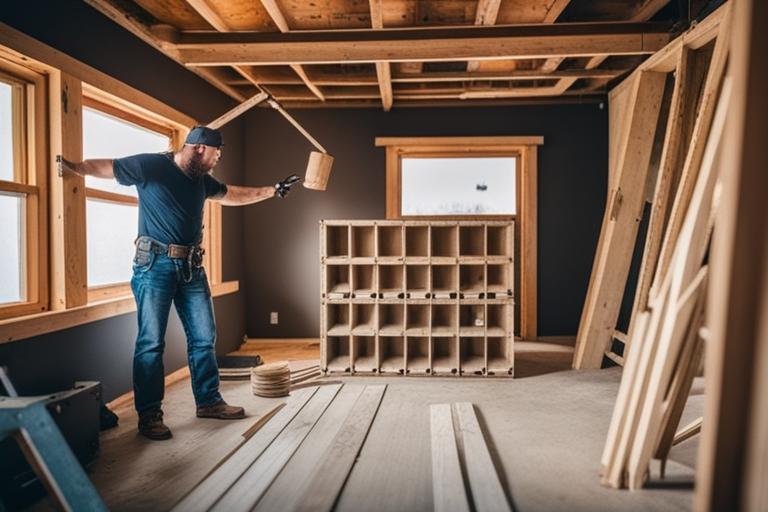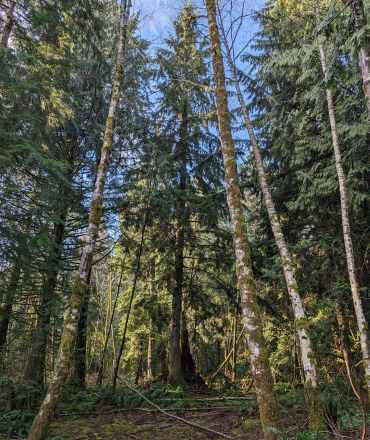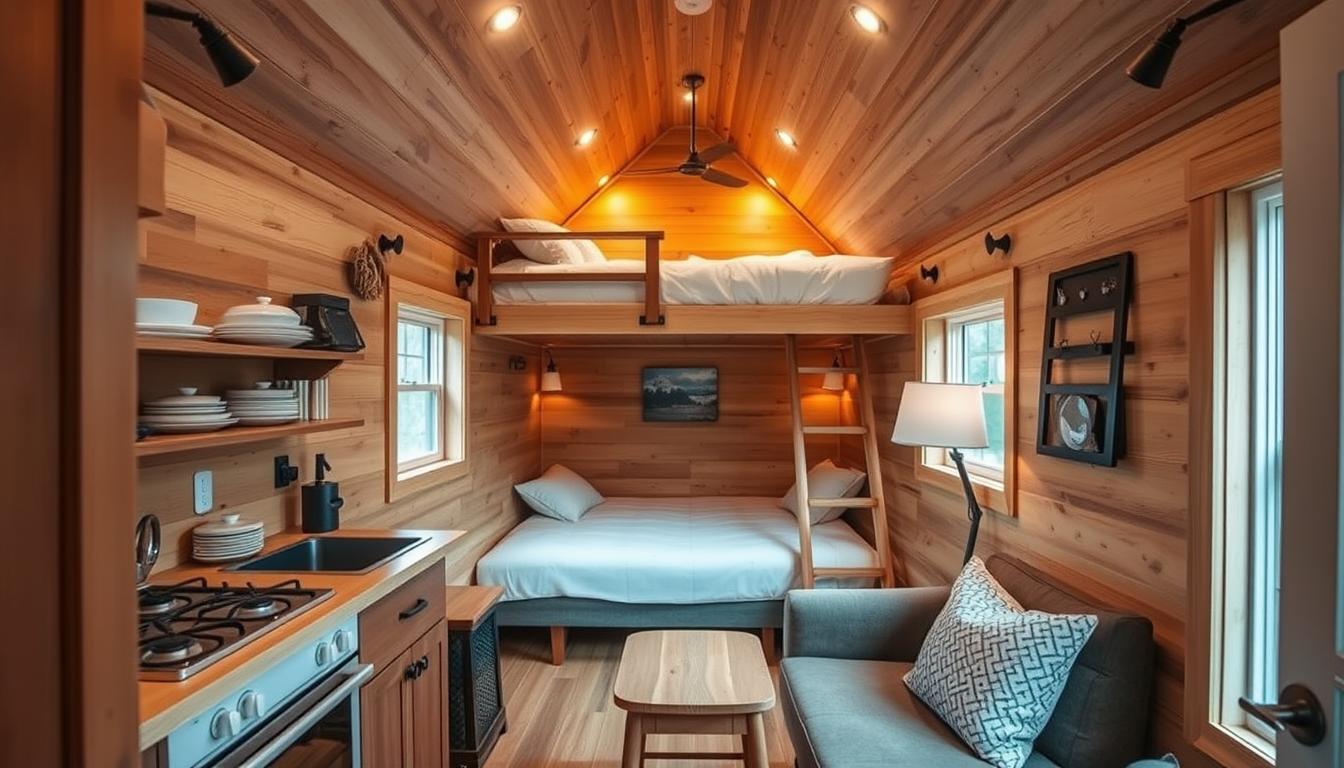In recent years, the tiny house movement has gained significant traction as an alternative lifestyle choice. These small, compact dwellings, typically ranging from 100 to 400 square feet, offer a minimalistic and eco-friendly approach to living. The appeal lies in their affordability, mobility, and reduced environmental impact, making them an attractive option for individuals seeking financial freedom and a simpler way of life.
What You’ll Learn About Tiny House Costs
By reading this article, you will learn:
– Factors affecting the cost of a tiny house, including size, design, location, materials, and off-grid vs. on-grid living costs.
– Cost comparison between building and buying a tiny house, as well as the cost analysis of DIY vs. professional construction.
– Average cost breakdown, location considerations, budgeting, cost-saving strategies, hidden costs, and maintenance of tiny houses.

Factors Affecting the Cost of a Tiny House
The size and design complexity of a tiny house significantly influence its cost. A larger footprint or intricate architectural elements will inevitably raise the overall expenses. Moreover, customizations such as loft spaces, innovative storage solutions, and high-end finishes can contribute to a higher price tag.
Location plays a pivotal role in determining the cost of a tiny house. Urban areas and popular tourist destinations often have higher land prices and stricter building regulations, potentially inflating the total expenditure. Conversely, rural settings and less densely populated regions may offer more affordable land options and relaxed zoning requirements.
The choice of materials and amenities also impacts the cost of a tiny house. Opting for sustainable, high-quality materials and luxurious add-ons will escalate the overall budget, while prioritizing cost-effective alternatives can help in cost management without compromising on quality.
Deciding between off-grid and on-grid living affects the cost equation. Off-grid setups, including solar panels, composting toilets, and rainwater harvesting systems, involve higher upfront costs but lower long-term utility expenses. On the other hand, connecting to municipal utilities might reduce initial construction expenses but lead to higher ongoing operational costs.
Cost Comparison: Building vs. Buying a Tiny House
Building a tiny house from scratch allows for customization but demands substantial time, effort, and expertise. The costs encompass materials, tools, permits, and possibly professional assistance, with the overall expenditure varying based on individual preferences and skill levels.
Purchasing a pre-built tiny house presents a convenient and time-saving option. While the upfront cost may be higher than a DIY build, it eliminates the need for extensive construction knowledge and expedites the transition to tiny house living.
DIY vs. Professional Construction: Cost Analysis
Undertaking a do-it-yourself construction approach can yield cost savings but requires proficient carpentry skills and comprehensive knowledge of building codes and regulations. It’s essential to factor in the potential for project delays and the need to rectify errors, which can impact the overall cost.
Engaging professional builders ensures expertise and adherence to construction standards. However, this route typically involves higher labor costs, and the challenge lies in finding builders experienced in tiny house construction due to its unique requirements.

Average Cost Breakdown of a Tiny House
On average, the total cost of a tiny house ranges from $20,000 to $150,000, with variations based on the aforementioned factors. This sum encompasses expenses for materials, labor, permits, and land, providing a comprehensive overview of the financial outlay involved in tiny house ownership.
| Expense | Cost Range |
|---|---|
| Building Materials | $8,000 – $30,000 |
| Labor Costs | $10,000 – $80,000 |
| Permits | $900 – $2,000 |
| Land | $5,000 – $50,000 |
| Expense | Cost Range |
|---|---|
| Building Materials | $8,000 – $30,000 |
| Labor Costs | $10,000 – $80,000 |
| Permits | $900 – $2,000 |
| Land | $5,000 – $50,000 |
Location Considerations and Budgeting
Location greatly influences the total costs associated with a tiny house. Understanding regional variations in land prices, zoning regulations, and utility connections is imperative for accurate budgeting and cost projections.
Land prices vary widely across different regions, with urban areas generally commanding higher prices than rural locales. Zoning regulations dictate permissible land usage and construction specifications, while utility connections entail costs for water, electricity, and sewage systems.

Cost-Saving Strategies for Building a Tiny House
Incorporating reclaimed and salvaged materials, such as repurposed wood and recycled fixtures, presents a sustainable and cost-efficient approach to construction. Furthermore, embracing minimalist and efficient designs optimizes space and reduces material requirements. Implementing space-saving solutions and energy-efficient features not only reduces construction costs but also leads to long-term savings through lower utility bills. Utilizing multifunctional furniture, maximizing natural light, and investing in energy-efficient appliances contribute to cost-effective living. Exploring alternative financing avenues, including personal loans, crowdfunding, or tiny house-specific financing programs, provides flexibility in funding the construction or purchase of a tiny house.

Hidden Costs and Maintenance of Tiny Houses
Owning a tiny house entails ongoing maintenance costs, including repairs, replacements, and upkeep of essential systems. Budgeting for these recurring expenses is essential for sound financial planning and the preservation of the tiny house’s longevity. In addition to construction and maintenance outlays, tiny house owners should account for insurance premiums, property taxes, and utility bills. These hidden costs contribute to the overall financial commitment of tiny house living and necessitate prudent budgeting. Anticipating long-term expenses is crucial for financial preparedness. Establishing a contingency fund for unforeseen repairs and prioritizing high-quality, durable materials during construction are prudent measures for mitigating long-term costs.

Case Studies and Cost Experiences
Real-life case studies and experiences of individuals who have successfully built or purchased tiny houses offer valuable insights into cost management strategies and the practicalities of tiny house living. Gaining insights into the cost management techniques employed by others and learning from their experiences provides a wealth of knowledge for prospective tiny house enthusiasts, aiding in informed decision-making and financial planning.
Sarah’s Journey: Managing Costs and Lessons Learned
Sarah’s Financial Struggle
Sarah, a 32-year-old graphic designer, decided to downsize and build her own tiny house to reduce her living expenses and carbon footprint. Initially, she underestimated the cost of materials and labor, which led to unexpected financial strain.
Reevaluating the Budget
Sarah had to reevaluate her budget and explore cost-saving strategies. She started sourcing reclaimed materials and opted for a simpler design to cut down on expenses. Through careful planning and adjustments, she successfully managed to bring her project back within budget.
Lessons Learned
Sarah’s experience taught her the importance of thorough research and realistic budgeting. She advises aspiring tiny house owners to factor in a buffer for unexpected costs and to explore alternative financing options from the beginning.
Conclusion
Understanding the multifaceted nature of tiny house costs is pivotal for anyone considering this housing option. From construction and location-related expenses to ongoing maintenance and hidden costs, a thorough comprehension of the financial implications is indispensable.
Answers To Common Questions
How much does a tiny house typically cost?
The cost of a tiny house can vary, but on average, it’s around $30,000 to $60,000.
Who builds tiny houses and how do I find them?
Tiny houses can be built by professional builders or DIYers. You can find builders online or through local workshops and events.
What are some cost-saving tips for building a tiny house?
To save on costs, consider using reclaimed materials, doing some of the labor yourself, and opting for a simpler design.
How can I finance a tiny house purchase?
Financing options for tiny houses include personal loans, RV loans, and tiny house-specific loans from certain lenders.
What are some common objections to living in a tiny house?
Some common objections include concerns about space, storage, and difficulty in adjusting to a minimalist lifestyle.
How can I address objections from family and friends about living in a tiny house?
You can address objections by emphasizing the financial freedom, environmental benefits, and simplified lifestyle that come with tiny house living.
With a background in sustainable architecture and over a decade of experience in construction project management, the author of “How Much Does a Tiny House Cost: A Comprehensive Budgeting Guide” is well-versed in the intricacies of tiny house budgeting. Holding a Master’s degree in Sustainable Design and Construction, they have conducted extensive research on the cost-effectiveness of tiny house living and have been involved in various case studies analyzing the financial aspects of tiny house projects.
Their expertise extends to location-specific cost considerations, having collaborated with urban planners and environmental psychologists to understand the impact of location on budgeting for tiny houses. Furthermore, the author’s work has been published in leading architectural journals, and they have been a speaker at international conferences on sustainable housing solutions.
Drawing from their practical experience and academic insights, the author provides readers with a comprehensive and well-informed guide to navigating the cost complexities of tiny house living.










